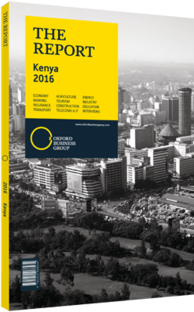Robert Muriithi Ndegwa, Managing Director, Kenya Tourism Board (KTB): Interview

Interview: Robert Muriithi Ndegwa
What specific initiatives is the KTB currently undertaking to speed the recovery of the market?
ROBERT MURIITHI NDEGWA: We are working to engage local industry stakeholders – public and private – as well as the international market, and we have put several measures in place to address the needs of the sector. First, we have created a Tourism Recovery Task Force (TRTF) composed of public and private players to identify measures that will help get the sector back on tract. The TRTF recently issued a report that will soon be delivered to President Uhuru Muigai Kenyatta. These measures will be put into effect in the coming years.
The government has also set aside funds for global advertising and public relations campaigns to counter overly negative sentiment in international media. It is essential that we take control of the information in the market. These campaigns will be launched in mid-2015 in our key source markets, including Europe, the US and Asia. We have also worked with the government to enhance security and ensure the safety of tourists at attractions. Terrorism and insecurity are not unique to Kenya, but it is important that we show our key tourist markets that we take the situation seriously and are actively addressing it.
What specifically does Kenya need to do to position itself as a destination for meetings, incentives, conferences and events (MICE)?
NDEGWA: Kenya is known as a safari and beach destination, but part of Vision 2030 entails showcasing its potential as a multi-product destination. Kenya is an established regional business centre and Nairobi is a gateway to the region, so it is a natural location for MICE offerings. Kenya ranked as the second-most-preferred MICE destination in Africa after South Africa and with the proper projects and investments, this segment has unlimited possibilities.
To grow the segment, Kenya should expand the number of conference facilities and improve on existing ones. A project at Bomas of Kenya, in Nairobi, will see a 15,000-person conference facility completed in the near future that includes construction of four hotels. Outside of Nairobi, we see potential for the development of the MICE market in Western Kenya and along the coast, not only to capitalise on the country’s shoreline, but also to diversify the coastal market from dependence on beach tourism.
What challenges to growth is the domestic tourism sector currently facing?
NDEGWA: Domestic tourism offers the industry an easy way to grow the market size, as the target audience is already here. Already, 46.9% of bed occupancy in the country can be attributed to domestic and resident travellers, which is significant, but the potential is so much more. The biggest obstacle to growth is a lack of information about what is available to the domestic consumer. We are soon launching SMS campaigns to encourage the domestic market to travel more. While the domestic market will likely never offer the same monetary potential as the international market, it still supports the tourism industry.
In what ways do you think Kenya’s source markets are likely to evolve going forward?
NDEGWA: Regionally, we have seen benefits from increased collaboration with Uganda and Rwanda, which includes a single-tourist visa and free entry for residents of these countries. This is part of a broader plan to realign ourselves with new markets on the continent. Africa as a source market has been ignored for far too long, and many countries in West and Central Africa have middle classes with significant potential. There is also a lot of potential in targeting non-traditional European markets as well as emerging markets in the Middle East and Asia. We are currently working closely with the private sector in order to increase our visibility in these countries.
You have reached the limit of premium articles you can view for free.
Choose from the options below to purchase print or digital editions of our Reports. You can also purchase a website subscription giving you unlimited access to all of our Reports online for 12 months.
If you have already purchased this Report or have a website subscription, please login to continue.

